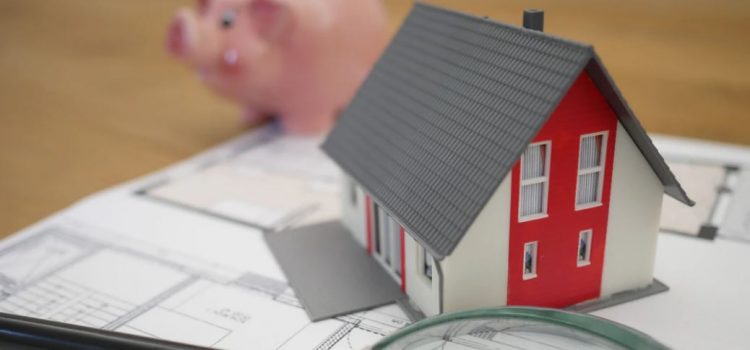
This is a free excerpt from one of Shortform’s Articles. We give you all the important information you need to know about current events and more.
Don't miss out on the whole story. Sign up for a free trial here .
In what ways does the current housing market resemble the 2006 housing crisis? Are we headed towards a second housing bubble?
As housing prices spike and rents soar, it’s starting to feel like it did back in 2006. Luckily, there are some major differences between the current housing market and that of the 2006 housing bubble. To name some: there’s a decrease in the availability of credit and the cause of the inflated prices is different.
Below, we’ll take a look at the current real estate market and compare it to the 2006 housing bubble.
The Cost of Homeownership in 2022
Single-family home prices in the United States are averaging over $348,000—a record based on data since 1968. With such increases, some observers warn that the current housing market is in bubble territory, reminiscent of the housing market of 2006 that led to the Great Recession.
However, most economists agree that today’s market is fundamentally different from that one, and that despite some similarities, there’s little chance of an imminent crash. Instead, most predict a slowdown but still a continued robust market for the next few years.
Déjà Vu All Over Again?
Today’s market unarguably has similarities to the 2006 housing market:
- High prices: Even accounting for inflation, prices have surpassed their 2006 peak.
- Fast and furious sales: Mortgage-free cash sales, waived inspections, and frantic bidding wars echo the lead-up to the crash. Houses measure their time on market in days, not months, and are selling for more than their listing price—often significantly more.
- Spiking rents: Rents have similarly soared, approaching 2006 levels in their relationship to home prices, indicating a swath of potential homeowners who’d rather buy, but can’t, and are increasing the pool of renters instead.
However…
Despite the similarities, there’s an important difference: the decreased availability of credit.
Back in the 2000s, the era of so-called “no-doc” mortgages, it often seemed like all you needed to obtain a loan was a pulse—forget verification of finances. Today, lenders have tightened standards beyond even the requirements of the Dodd-Frank Act that was passed in response to the crisis. As a result, the ratio of real estate loans to total loans is at its lowest level since the 1980s.
Additionally, people are less highly leveraged today. In late 2009, 26% of homeowners owed more on their mortgages than their homes were worth. At the end of 2020, that number was just 2.8%. This makes the market more stable, as people who can’t make payments—say, because of a job loss—can sell at a profit, pay off their existing mortgage, and avoid foreclosure.
Consequently, we’re living through a very different boom today, one fueled, not by debt, but by a supply and demand imbalance years in the making.
High Demand, Low Supply
The primary cause of the current housing price crunch is high demand coupled with low supply. Demand has been driven by several factors:
The pandemic prompted a rush to upsize homes as people hunkered down in them, prompting a wave of new home-seekers. Millennials entered prime homebuying years, and the pandemic accelerated their age-appropriate desire to settle down. Low interest rates fueled easy mortgage payments. As a result, the homebuying rate is on track to surpass that at the peak of the housing boom in 2006.
Tight supply is a result of a decade of lower building rates. After being burned in the Great Recession of 2009, many home builders strategically decreased their output. Although building ramped up in 2020 in response to increased demand, builders then faced pandemic-induced shortages of materials and labor—more than 90% reported shortages of appliances and lumber in May. This affected all types of home building: single-family, multifamily, affordable, and market rate.
Additionally, the inventory of available existing homes has shrunk: Between March 2020 and March 2021, it decreased by 30% as homeowners who might have considered listing their homes decided instead to stay put, reluctant to compete with so many others for their next house.
Are We Headed for a Correction?
Some observers predict we’ve seen the height of the boom already, and that the market is poised for a correction.
- Rising prices have priced many buyers out of the market: Around 60% of U.S. households wouldn’t be able to afford an average home at today’s prices. This is unsustainable.
- The economy is still recovering from the pandemic-induced recession—unemployment is still high and job creation is slowing. This will increasingly limit how much people are able to spend.
- Mortgage rates are rising. Even if jobs recover, rising rates may outweigh their effect: In 2018, home sales declined because of increasing rates, despite strong job creation.
Further, some recent sales may have been sales that would have happened in the next few years anyway but were accelerated by the pandemic. This might lead to a natural slowdown since pent-up demand has already been met.
Or a Prolonged Boom?
However, others argue that even if the market cools, it’s unlikely to crash. Supply will stay low for the foreseeable future, while demand will stay high as more Millennials, and then Gen Zers, age into homebuying.
Additionally, some governmental policies intended to help potential homeowners might end up prolonging the heated market. During his campaign, President Biden developed a housing plan to assist first-time homebuyers with a $15,000 tax credit. This may end up increasing the supply of people looking to buy homes without increasing the supply of homes themselves, resulting in ever higher prices.
Finally, although mortgage rates are rising, they’ll likely stay relatively low: The Federal Reserve recently announced that they’ll maintain low interest rates until employment and inflation goals have been met, both of which are still a long way away.

Want to fast-track your learning? With Shortform, you’ll gain insights you won't find anywhere else .
Here's what you’ll get when you sign up for Shortform :
- Complicated ideas explained in simple and concise ways
- Smart analysis that connects what you’re reading to other key concepts
- Writing with zero fluff because we know how important your time is






